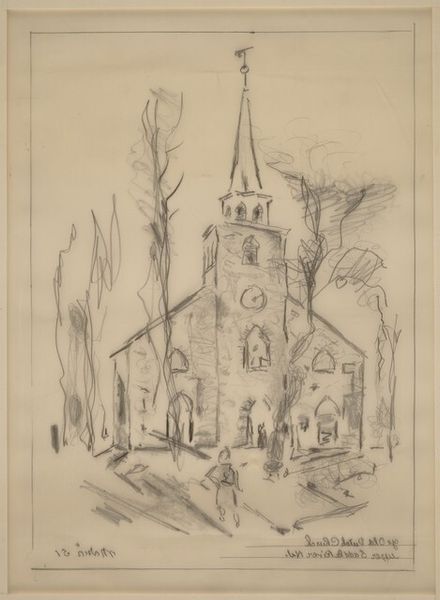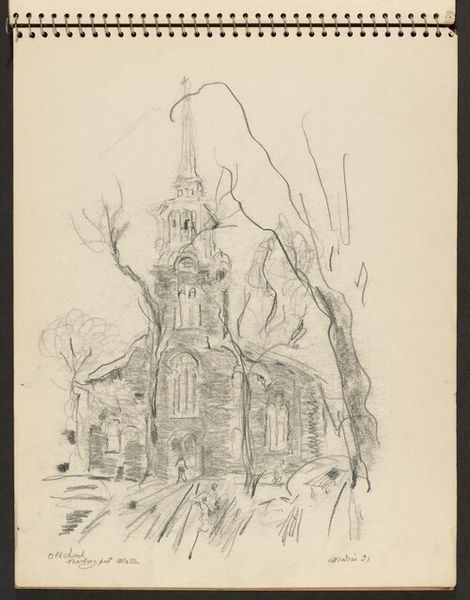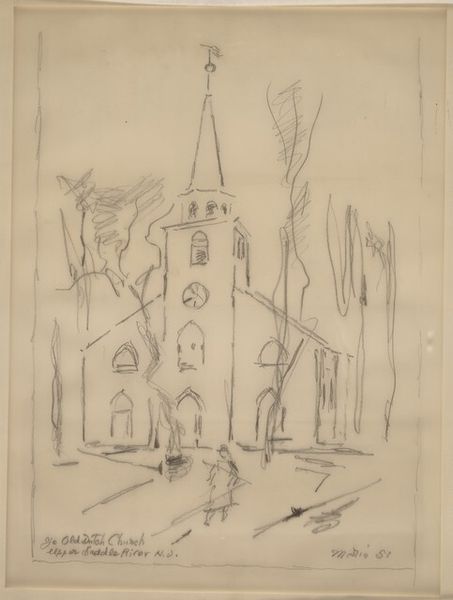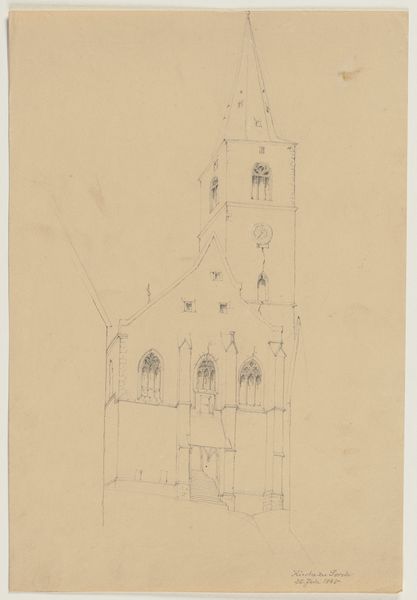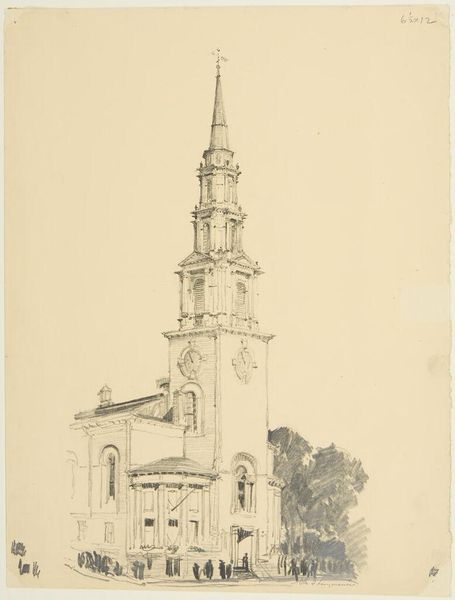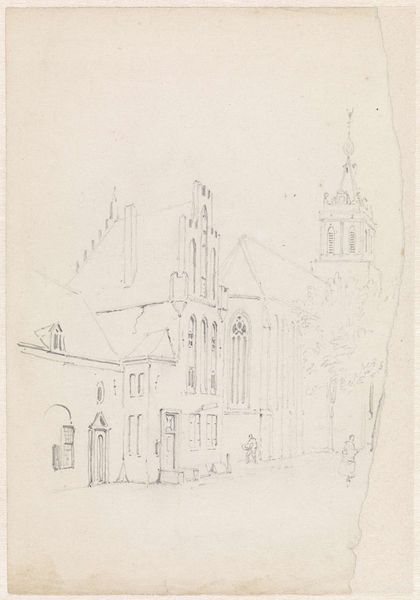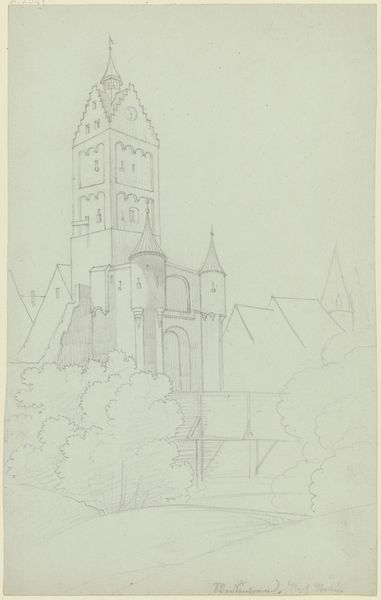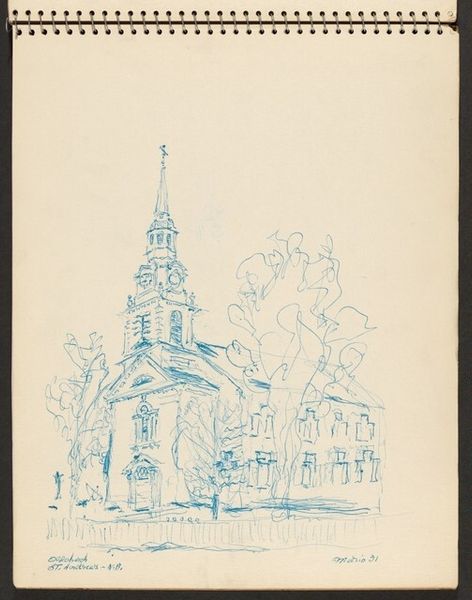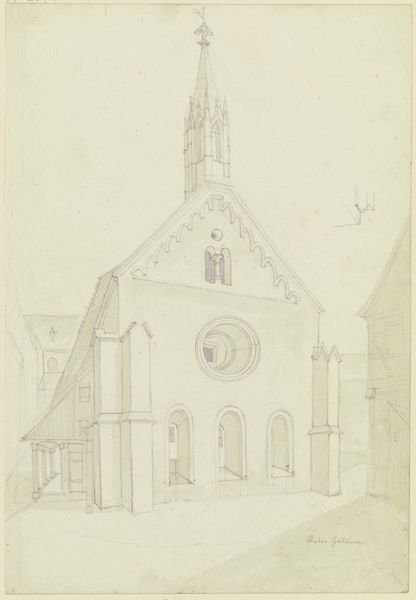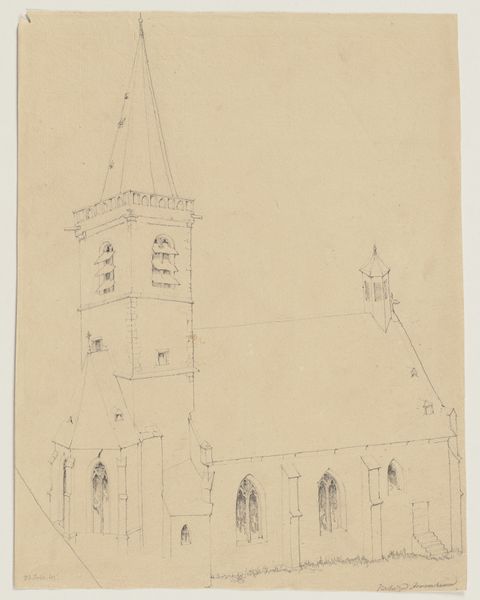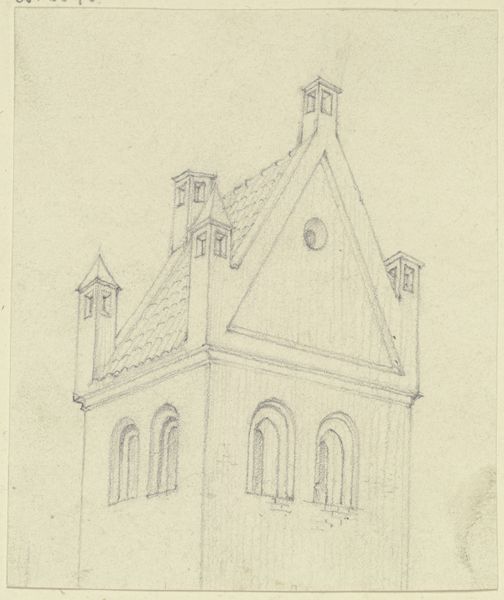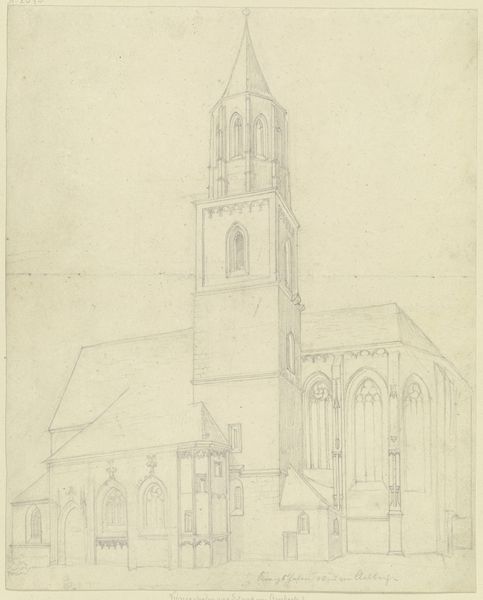
drawing, paper, pencil
#
drawing
#
ink drawing
#
pen sketch
#
landscape
#
paper
#
pencil
#
regionalism
Dimensions: overall (approximate): 20.3 x 16.3 cm (8 x 6 7/16 in.)
Copyright: National Gallery of Art: CC0 1.0
Curator: Before us is "Ye Old Dutch Church, Upper Saddle River, New Jersey," a 1950 pencil and ink drawing on paper by John Marin. Editor: There’s a somber yet hurried energy here. The stark lines capturing this imposing church practically vibrate with a feeling of both historical weight and temporal transience. It feels a bit haunting, actually. Curator: Marin was part of a Regionalist movement invested in American scenes, and this drawing does evoke that focus, though his touch is uniquely his. Consider the position of churches within communities during this period – spaces not just of spiritual gathering but of civic identity formation. How did architectural styles, such as the Dutch colonial revival seen here, contribute to narratives of heritage and belonging? Editor: It makes me think about exclusion as much as belonging, really. The sketch-like nature, the deliberate incompleteness of it all, suggests a critical approach. Marin seems less interested in pure architectural celebration and more in… dissecting the church's presence in the landscape, particularly in relation to societal power structures and the people it ostensibly served. Who had access? Who defined the narrative? The loose style leaves room to read these complexities into it. Curator: I understand your inclination to consider such dimensions. And it is quite valid, especially in our contemporary landscape of reconsidered narratives. However, Marin’s stylistic approach—what some have dubbed his "abstract Impressionism"—needs contextualization. It could be argued that the perceived incompleteness you mention reflects the dynamic modern experience he wished to portray rather than intentional socio-political commentary per se. The historical record suggests a commitment to feeling more than to overt statements. Editor: Feeling and overt statements can intersect. Let's think about how marginalized communities are consistently "felt" but rarely listened to. The fact that Marin is portraying this church in 1950, a time of civil rights upheaval and quiet questioning, places the work within a specific historical milieu. I view his chosen form – fleeting, unfinished – as a method of resisting concrete authority, be that religious, architectural, or even artistic, a symbolic refusal to cement the church's imposing power. Curator: A compelling point indeed. Food for thought. Editor: It is precisely these contextual readings, these dialogues across history and theory, that makes looking at artworks like Marin’s drawing eternally fascinating and perpetually relevant.
Comments
No comments
Be the first to comment and join the conversation on the ultimate creative platform.
